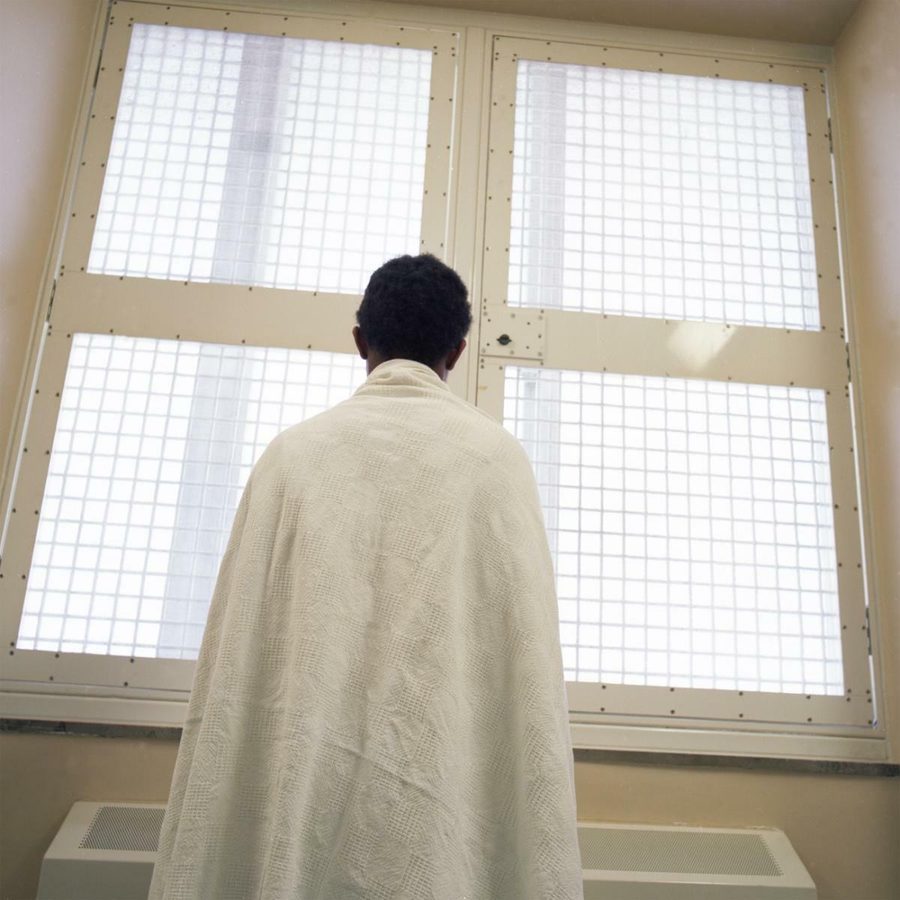Wisconsin’s Incarcerated Fear Summer Heat
Seasonal temperatures exacerbated by climate change and inadequate infrastructure threaten incarcerated people statewide.
Arvind Dilawar

On June 5, the temperature in Eau Claire, Wis., shot up to 97 degrees. Local media reported the first heat wave of the season as breaking record highs, damaging roads, and threatening residents with heat-related illnesses or even death. Less than 35 miles east of Eau Claire, over 1,400 incarcerated people at Stanley Correctional Institution had little respite from the heat. Daren Yaeger, who has been incarcerated at Stanley Correctional Institution for 11 years, describes this summer as the hottest he’s experienced.
“The heat in our cells was as high as 85 to 90 degrees during the day,” says Yaeger. “In the evening, it would be like 70 to 75 degrees in our cells. Our windows here don’t open.” According to Yaeger, prison administrators relied on exhaust fans to reduce heat exposure — “which is like doing nothing,” as they recycle the same air, rather than cool it.
Yaeger is among nearly 20,000 people incarcerated in Wisconsin who are increasingly exposed to sweltering temperatures each summer. As climate change drives global warming and inadequate prison infrastructure fails to provide relief, prison abolitionists and even some politicians are emphasizing the need to protect the incarcerated from summer heat.
The Wisconsin Department of Corrections manages 37 state prisons, many of which are not outfitted with air conditioning or even windows that can open. Instead, prisons rely on ventilation systems with air-handling units, which circulate air in and out of individual cells. As temperatures rise, the units automatically minimize fresh air intake, theoretically keeping prisons cool by reducing the amount of hot air pulled in from outside.
But in the experience of incarcerated people, the ventilation systems are inadequate. 62-year-old Melvin Kellam, who is also incarcerated at Stanley Correctional Institution, avoids going outside during the summer and tries to stay hydrated. Despite these efforts, Kellam suffered a bout of heat exhaustion last year, which he says the ventilation system did little to prevent.
“When it’s hot, the vents will blow out hot air,” explains Kellam. “So when we are miserable from the heat, it is magnified by ten on the misery scale.”
According to John Beard, director of communications for the Wisconsin Department of Corrections, special measures to reduce heat exposure are supposed to be enacted once the heat index reaches 90 degrees. At that point, prison administrators are to “remind persons in our care to watch for signs of overheating, suspend strenuous sports/rec activities, encourage intake of more fluids, increase access to ice, and modify rules for some institution jobs,” says Beard. However, incarcerated people report that in such situations, administrators don’t comply with those health guidelines.
“We get ice at dayrooms and meal times, but sometimes it is so hot the ice machine tends to run out or doesn’t make it at all,” says 31-year-old Aaron Pavin, who is incarcerated at Columbia Correctional Institution, north of Madison. “One day it died, and the officers refused to go get some from another unit until supervisors were notified due to an inmate having to threaten self-harm.”
“They would rather see us sit on the benches under the hot, humid sun, than stand in the shade,” says 33-year-old Jonathan Ortiz Antonio Rodriguez, incarcerated at Stanley Correctional Institution. “They enjoy treating us like deprived adult children.”
Whether prison administrators’ indifference to heat exposure is deliberate or not, it may constitute a violation of incarcerated peoples’ civil rights. Nicasio Cuevas Quiles, who is 48 years old and incarcerated at Oakhill Correctional Institution, south of Madison, reports suffering from heat-related medical issues during his fourteen years of incarceration and likens the denial of air conditioning to “cruel and unusual punishment,” as prohibited by the Eighth Amendment of the U.S. Constitution. Such a case was made in 2017, when a federal judge ruled that the Texas Department of Criminal Justice was in violation of the Eighth Amendment after an incarcerated man died from heat stroke.
As troubling as recent reports of heat exposure may be, incarcerated people and their advocates worry that the worst is yet to come. According to the Wisconsin Department of Natural Resources, climate change is expected to triple the frequency of extreme heat in the state, from 10 days per year in 2020 to 30 days in 2050. In line with these figures, Yaeger describes the last few summers at Stanley Correctional Institution as being especially hot, which he also attributes to climate change.
“The summer heat has been getting worse over the last three to four years,” he says. “We don’t really have a spring anymore. It’s like we go from winter right into summer. This last May, we had days where the temperature reached 80 degrees, which is uncommon for the month of May. … Global warming is a real thing.”
Yaeger’s concerns are echoed by Richard Thomas, an organizer with Fight Toxic Prisons (FTP), a collective which addresses issues at the intersection of incarceration and the environment. Operating in Florida, Alabama, Texas, and California, FTP has a broad perspective on conditions within prisons around the country.
“Unfortunately, complaints about summer heat have definitely been worsening,” he says. “This has in part been because of climate change, but it has also been because of the Covid-19 pandemic. Last summer, and even to a large degree this summer, many prisons have maintained strict lockdown policies as a measure to prevent the spread.”
The Wisconsin Department of Corrections has faced its own challenges responding to Covid-19, but even less has been done to address climate change. According to Beard, the Wisconsin Department of Corrections has no plan in place to address climate change per se. The administration of Governor Tony Evers, who ran on a platform which included criminal justice reform, instituted a policy last summer stipulating that all new prison construction or major renovations must include air conditioning. But in the meantime, Wisconsin’s incarcerated look for simple relief.
“I am really looking forward to getting transferred out of Stanley because my next prison will have windows that open,” says Yaeger. “So if my cell gets too hot, I will be able to open the window for some fresh air.”
Arvind Dilawar is an independent journalist whose work has appeared in Newsweek and Vice.




